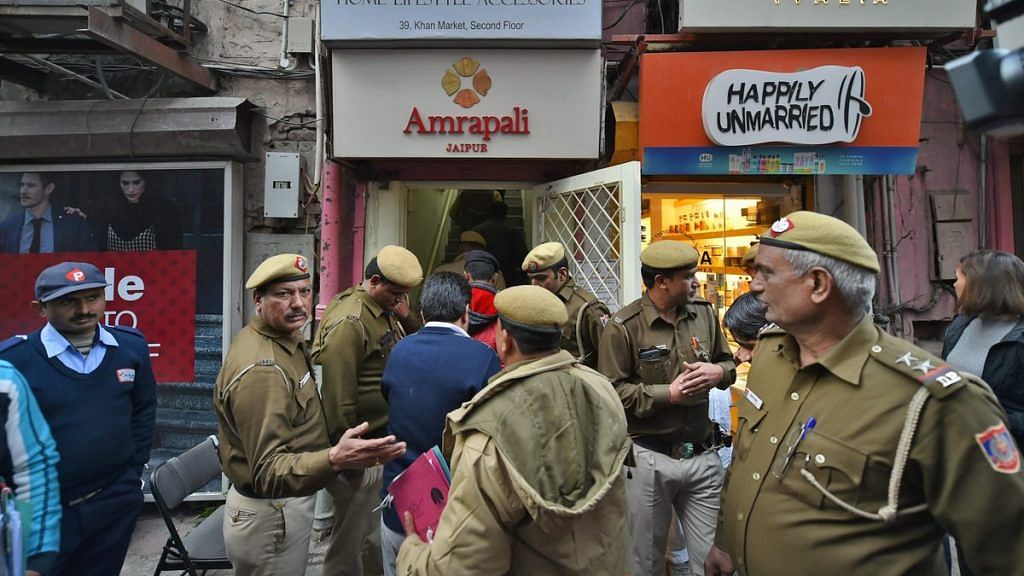Sealing buildings is the biggest example of the kind of judicial activism that Supreme Court must stay away from.
The Supreme Court of India this week appears to have backed off from bringing more political spotlight on its notorious ‘sealing drive’ in Delhi that began 12 years ago in a public interest litigation case. It let off parliamentarian Manoj Tiwari with only a slap on the wrist in a contempt of court case.
The court said Friday that “its shoulders are broad enough to take criticism in its stride” and decided to drop the case against Tiwari. The ruling comes two months after the Supreme Court took cognisance of Tiwari’s contempt of court and decided to take him to task.
After all, Tiwari in an unabashed show of strength broke the seal of a building in his constituency that was sealed under the supervision of the Supreme Court-appointed monitoring committee for flouting norms. Tiwari even accused the three-member monitoring committee of running a “sealing racket in connivance with corrupt officers” and called for a civil disobedience movement.
What’s worse for the judiciary is that Tiwari refused to “unconditionally apologise” as the norm goes to be let off in contempt cases. He simply said his actions were “symbolic protests” and his lawyer senior advocate Vikas Singh criticised the judges some more while making arguments in court.
Also read: Politicians and their vote banks will make Delhi unliveable, says man behind sealing drive
Why go easy on Manoj Tiwari?
In a 7-page ruling, the Supreme Court uses strong words against Tiwari calling him all sorts of names. The court terms Tiwari “a rebel without a cause” and reprimands him for his “misplaced bravado” and chest thumping” and is “extremely pained by the machismo” he displayed by breaking the seal.
The court had commissioned two reports from the monitoring committee comprising two bureaucrats and a retired senior Army officer Bhure Lal, chairman of the Environment Pollution (Prevention and Control) Authority, K.J. Rao, former adviser to the Election Commission and Major General Som Jhingan (Retd) and concluded that Tiwari had made “serious but frivolous allegations”.
But sending a sitting MP, that too from the ruling BJP, to jail for taking on the court in this issue would have invited political wrath that the bench headed by Justice Madan Lokur could not have dodged with sarcasm.
When Union minister for urban development Hardeep Puri criticised the Supreme Court’s intervention as “flawed”, the court had responded with sarcasm saying the judges indeed lacked “common sense”.
“Please ask him where we should get common sense. Is it available in the market?” Justice Lokur had asked Additional Solicitor General A.N.S. Nadkarni.
Also read: You can’t come into my house, seal it & then discuss: Minister H.S. Puri on Delhi sealing drive
The ‘sealing’ case
Through the sealing case, the Supreme Court virtually made itself a nodal agency for civic bodies in the national capital. Delhi has a complicated system of civic governance with multiple central and state agencies, given its unique legal status.
The Supreme Court committee to seal unauthorised use of Delhi’s residential areas was set up on 16 February, 2006. The orders to set up this committee were passed in a 1985 PIL filed by environmentalist M.C. Mehta to stop polluting industrial activity in residential areas.
Since 2006, the central and state governments have enacted laws to circumvent the court rulings. However, the Supreme Court refused to drop the PIL. The committee ceased to operate in 2012 after it found that it had brought a “climate of acceptance” for rules in Delhi. In 2017, the Supreme Court revived the committee.
The committee has so far submitted over 130 reports, and a senior lawyer acting as an amicus curie informs the court of the committee’s actions. The committee, along with the municipal authorities identifies properties that are flouting norms and public notices are served. If the “illegal activity is not stopped” the premises are sealed.
Since the committee derives its powers from the Supreme Court, anybody with a grouse against the team can only approach it. Even complaints are initially vetted by the amicus before presenting them to the court, taking away a citizen’s right to legal recourse to a great extent.
What is more troubling is the fact that only the Supreme Court can review the actions of the committee, whose composition has not changed in 12 years. Even looking into allegations that Tiwari has made will mean delegitimising the court.
Also read: Please save the judiciary from the judges as well, your lordships
Time to end
It is trite to even explain why judges of the highest constitutional court are not in the best place to deal with civic issues.
The sealing drive is the biggest example of the kind of judicial activism that the court must stay away from. On one hand, the Supreme Court makes strong oral observations implying motives to government officials while on the other hand, it appeals to the government to not politicise the sealing drive.
Tiwari’s actions, however, condemnable must serve as a reminder to the judiciary to reflect on its pointless pursuits. In one hearing, Justice Lokur, frustrated with the government’s inaction on the sealing issue, told the ASG that he failed “to understand what are we supposed to do”.
The lordship’s decision in Manoj Tiwari’s case is a cue – back off.
